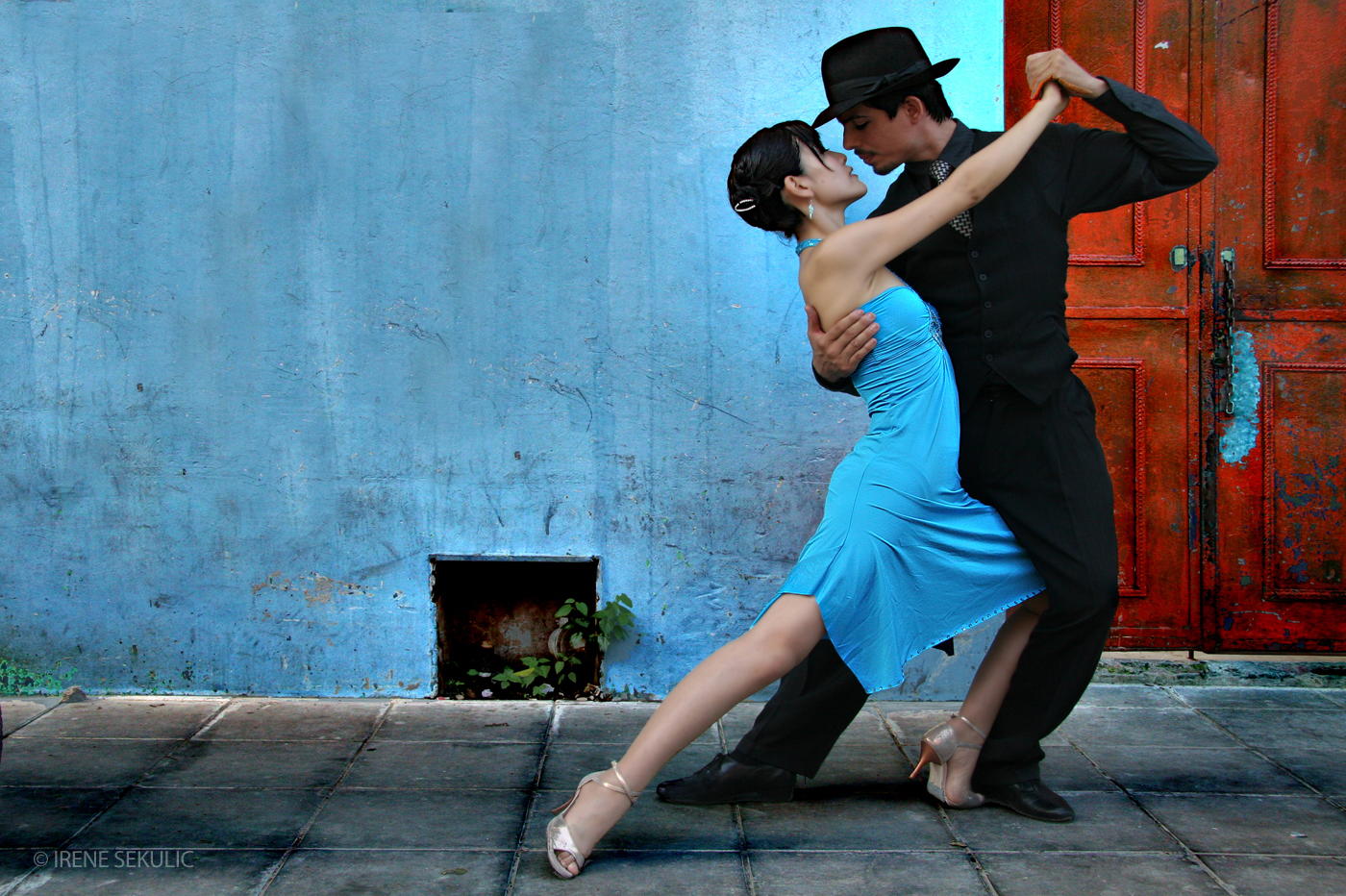_________________________________
di Gino Carbonaro
Tango classical shape
The
Tango was born in Argentina and Uruguay the late nineteenth century. Within a
few years it becomes an event of exceptional importance, immediately exported
to all parts of the world. To understand the dynamics of the Tango, it is
necessary to retrace the history of Argentina at that particular time.
Towards
the end of the 800, Argentina is the fifth largest economy in the world,
starting in 1880 becomes a destination for mass immigration and multi-ethnic.
It is mostly Spanish, Italian, French, Poles, but also Jews, Russians.
Immigrants
arriving in the port of Buenos Aires are welcomed by "compadritos",
[1] and on arrival are piled in large buildings (conventillos), which is assigned a bed and offered a job.
Soon,
immigrants realize that the work is unsustainable, from dawn to the last light
of sunset. Freedom is lost. Far away from their land, family, parents, private
affections, devoured by nostalgia, these men put in crisis the value of the
same existence.
Slowly,
the constant influx of immigrants is double within a few decades the population
of Argentina, making change the male-female relationship, that in Buenos Ayres
become (it is said) of four men for every woman. Few women to men who have no
opportunity to satisfy their emotional needs, their sexual needs.
Quilombos and Enramadas
The abnormal ratio between males and females enhances the development of
prostitution, and the multiplication of local (Quilombos, Enramadas [2]) where young immigrants, come to spend your
free time, talk to someone, to drown their sorrows in alcohol and admire the
Gauchos [3] of the Pampas, experienced dancers, who waiting for their turn to
go with a woman perform in amazing and applauded dance contests (among males)
on the Milonga rhythm. [4]
Being
long the wait, the "Mistress" think to hire the orchestras. These are
small musical ensembles: the beginning, violin, flute, bass, concertina, [5]
which were very successful interpreting "Milonga" and
"Criolla" music typically Argentine (Tango is not yet born). Only
after 1895 it will make an appearance on bandoneon, which will become the
classic tango instrument.
Now,
even the Mistress of the Quilombo on a show in front of the dancing customers
with its compadrito [6], while some prostitute in turn may grant some dancing
to the more good customers.
Tango
(Classical
Figure)
But,
at that meeting, the dance became a different thing. The partners embraced in a
provocative way, the compadrito-pimp showed his macho dancer skills inventing
movements and figures with steps extemporaneous. The woman indulged, but the
dance figures were at the same time aesthetic beauty and sexual provocation,
certainly functional to the place and at the time, however, necessary to take
the overheated environment climate.
That's
how slowly you define the Tango. Tango as a spectacle intentionally to
customers 'particular' and heterogeneous. Tango as the solace that makes life
worth living. Tango that slowly becomes a symbol which will eventually
recognize all immigrants.
Loneliness,
despair, need love, bitterness, desire for a woman, unfulfilled sexuality, but
also need to tell yourself that you are not alone in their misfortune, they say
it all the words and music of Tango.
Tango. A sad thought that dances
Over
time, the text became more important and capable of touching the soul strings
of those who were the first and actual users of the Tango. It is so, that is
transformed into Tango Milonga.
The
Tango texts (lirics) speak of men who have been abandoned by a woman
(Caminito), of meeting places with women dream (A Media Luz), of children who
die with guilt for leaving the mother alone at home (Cumparsita), the dramatic
situations and absolute pain (dolor I).
The
Tango atmosphere is "fin du siècle", melancholy and decadent. It is
no coincidence that the Tango will have a fortune ever recorded in the history
of music, with a term that has come to this day.
In
fact, if the words of the weeping Tango and his muffled music aim to saturate
the immigrant's needs, the Tango danced simulates sexual pleasure, the need for
physical contact with a woman, sort of simulated courtship, the pair of
"tango" realizes in dance, within an ideal space-time in which the
dancers come to live their moment of dream and of complicity with a woman or a
real man or dreamed. Woman (or man) that fate grants for the duration of a
Tango, and it will vanish into thin air, like a mirage, leaving only the memory
that experienced evasion.
The
return to the reality is marked by the harshness of the decisive final stages
of music, signaling the end of the dream and return to reality. The drab prose
of everyday life.
Gino Carbonaro




Nessun commento:
Posta un commento
Puoi cambiare questo messaggio sotto Impostazioni > Commenti